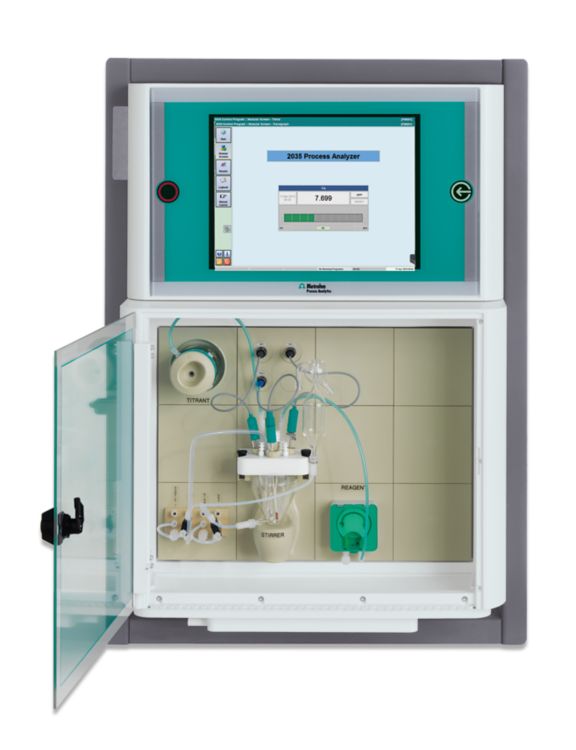Tetramethylammonium hydroxide (TMAH) is a quaternary amonium salt mostly used in the production of integrated circuits (IC), printed circuit boards (PCB), and flat panel displays (LCD), and photolithography is the most common process used to manufacture these devices.
In this process, a photoresist developer is used to transfer a pattern on a substrate. The chemicals used in the semiconductor industry must be exceptionally pure because even traces of contaminants have a negative effect on electrical properties.
The development stage is a critical step in photolithography, and in order to be successful, this process must be optimized in order to increase production efficiency. This Process Application Note presents a method to monitor the TMAH concentration in the developer solution via online process titration. This is a multiparameter analytical technique that can accurately monitor TMAH using a combined pH electrode.
For the production of semiconductors it is of the utmost importance to use extremely high purity chemicals. The presence of impurities (even trace concentrations) can significantly affect the material’s electrical properties. The same applies for the concentrations of the chemicals used during the production process. In back end of line (BEOL) processing, the photolithography process uses light to print thin film patterns from a photomask (an opaque plate with openings for light) on a micrometer (or smaller) scale with a light-sensitive photoresist chemical applied thinly on the silicon wafer.
After a certain exposure time, the printed circuit is developed and the photoresist can be stripped away in preparation for the next steps (Figure 1). Tetramethylammonium hydroxide (TMAH, N(CH3)4OH) is an alkaline ingredient in photoresist developer kept at a concentration between 2.38– 2.62% in many applications (Figure 2). TMAH is highly effective in stripping off the acidic photoresist as it becomes soluble in the developer. TMAH-based photoresist developers have replaced many traditional developers (such as KOH and NaOH) since these processes increasingly need to be metal-ion-free.
A concentrated solution of TMAH (25%) is diluted in the Chemical Central Supply System (CCSS) and the appropriate percentage is then added to the production line. Used TMAH developer containing the photoresist residue is returned and more TMAH is added to adjust the concentration. Once the amount of residue has reached a certain level, the waste is removed. A purification unit can be used to minimize TMAH in the waste stream.
Development is a critical step, and the 2035 Process Analyzer - Potentiometric from Metrohm Process Analytics (Figure 3) can monitor and even stabilize the TMAH concentration in the developer solution, ensuring proper photoresist stripping while minimizing the exposure of personnel to highly toxic TMAH, thus providing a complete turnkey solution. Continuous online analysis is also critical for the batch release of a chemical blending/dilution system for diluted TMAH.

The 2035 Process Analyzer configured for potentiometric titration performs the accurate analysis of TMAH online using a combined pH electrode. Precise dosing of TMAH in the developer solution by the analyzer is also a possibility to ensure a stable concentration for every batch.
Diluted tetramethylammonium hydroxide (TMAH): 2.38–2.62%, as concentrate: 25%
Other applications are available for the semiconductor industry including:
- copper, sulfuric acid, and chloride in acid copper baths
- hydrogen peroxide in CMP slurry
- acidity in mixed acid etchants
- hydrofluoric acid, ammonium hydroxide, and hydrochloric acid in standard clean baths
- Enhanced printed circuit yields with qualified TMAH compositions
- Increased product throughput with less wafer defects
- Greater mixing integrity and purity in the CCSS
- Enhanced reproducibility, production rates, and profitability (less waste)
 Share via email
Share via email
 Download PDF
Download PDF